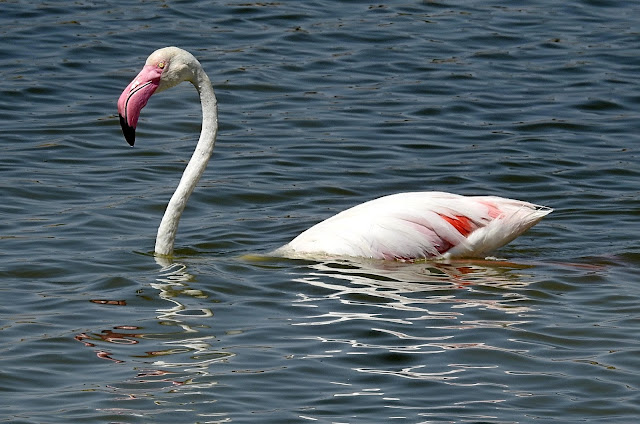The White-headed Duck, Oxyura leucocephala, presents a striking figure with its distinctive plumage and stout build. Males are adorned with a white head contrasted by a black crown, a blue bill, and a body cloaked in shades of reddish-grey. Females, on the other hand, exhibit a more subdued palette with a dark bill and less vibrant colouring.
Upon encountering this species, one can identify the male by its white head, black cap, and neck, and a blue bill, while the female can be recognized by her grey-brown body, white face, and darker bill and cap. These ducks measure between 43–48 cm in length and weigh approximately 580–750 g.
The White-headed Duck favors lakes with open water and dense vegetation along the margins, which provide essential cover and nesting sites. These habitats include natural lakes and ponds as well as man-made water bodies.
This species has a breeding range that spans from Spain and North Africa to western and central Asia. Sightings have been reported north of their typical range, though the status of these observations is often uncertain due to the potential for escapees from captivity.
The White-headed Duck is an adept diver and swimmer, often opting to escape threats by swimming rather than taking flight. It exhibits a preference for aquatic environments where it can forage and seek refuge.
An omnivorous diet characterizes this species, with a strong inclination towards vegetable matter. They forage by diving and swimming underwater, and display a notable reluctance to fly.
The International Union for Conservation of Nature (IUCN) has classified the White-headed Duck as "Endangered." Populations have seen a significant decline over the past decade, primarily due to habitat loss and hunting. Additionally, the Spanish population faces genetic dilution from interbreeding with the introduced Ruddy Duck (Oxyura jamaicensis), prompting conservation efforts to eradicate the non-native species from western Europe. The species is also protected under the Agreement on the Conservation of African-Eurasian Migratory Waterbirds (AEWA).
%2032.jpg)
%2031.jpg)
%2030.jpg)








%2020.jpg)
%2021.jpg)
%2022.jpg)
%2020.jpg)

%2020.jpg)
%2020.jpg)
%2020.jpg)
%2021.jpg)
%2023.jpg)
%2024.jpg)
















%20(Orthetrum%20chrysostigma)%2020.jpg)
%20(Orthetrum%20chrysostigma)%2021.jpg)






%20(Anas%20platyrhynchos)%2020.jpg)


